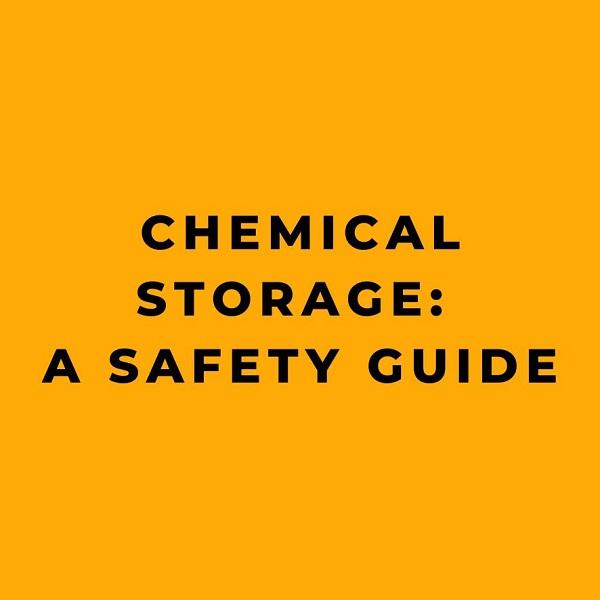Chemical storage is a critical component of safety in any setting where hazardous substances are present. This includes laboratories, industrial facilities, and even households. Proper chemical storage is essential to prevent accidents, mitigate risks, and safeguard the health of individuals and the environment. This comprehensive guide will explore the various facets of chemical storage, highlighting key concepts, best practices, and essential safety tips.
Understanding Chemical Storage Requirements
Safe chemical handling requires regular inspections of chemical storage areas and strict inventory control. It’s crucial to keep the quantity of chemicals on hand to a minimum to lessen inherent risks. However, when the use of chemicals is necessary, proper storage and handling can significantly mitigate or even eliminate associated risks. A key step in safe storage is maintaining an up-to-date inventory of chemicals and a comprehensive understanding of the hazards each chemical present.
General Storage Requirements
There are several general storage requirements to follow when storing chemicals. All chemicals should be stored in a safe, secure location. Shelves must be level, stable, and anchored to the wall or another sturdy structure. It’s essential to store chemicals away from direct sunlight, heat sources, and exit routes. Hazardous chemicals should be stored below eye level and never on the floor, window ledges, or balconies.
Containers should remain closed unless a chemical is being dispensed or added. Secondary containment for liquids is highly recommended to prevent spills. Using rated storage cabinets or safety cans, as specified by a Safety Data Sheet (SDS), is crucial. SDSs should be readily accessible for all hazardous chemicals in the workplace, providing employees with vital safety information.
Organizing Chemical Storage
Effective chemical storage organization requires an understanding of chemical reactions and the risks associated with chemical containment. In small spaces, academic laboratories, or stockrooms, chemicals should not be stored on the floor or near incompatible materials. Both the Environmental Protection Agency (EPA) and the Occupational Safety and Health Administration (OSHA) mandate secondary containment to provide a backup method for preventing hazardous spills if primary containment fails.
Storage of Laboratory Chemicals
In laboratory settings, specific guidelines for safe chemical storage should be followed. The quantities of chemicals stored within a laboratory should be minimized, as recommended by the National Fire Protection Association (NFPA) 45 and OSHA. Bulk quantities of chemicals should be stored separately, and flammable liquids should not be transferred from large metal containers within the laboratory. Chemicals should be stored according to the manufacturer’s recommended temperature and humidity levels, away from heat sources or direct sunlight. Chemicals should be dated upon receipt and when opened, with time-sensitive chemicals including an expiration date.
Chemical Storage Area
Chemicals should be stored in designated, locked areas specifically designed for chemical storage, in accordance with local and state guidelines. The storage area should include shelving for chemicals, organized to account for hazards and incompatibility. Separate, enclosed cabinets should be provided for acids, bases, oxidizers, organics, and other flammables. Equipment should be stored separately from chemicals, and highly toxic chemicals like inorganic cyanides should be stored in locked cabinets.
Keys for Safe Chemical Storage
Hazardous chemicals should be labeled with the identity of the hazardous chemical(s) and appropriate hazard warnings. Segregation of all incompatible chemicals by hazard class is crucial, and chemicals should not be stored alphabetically unless they are compatible. Flammables should be stored in flammable materials storage cabinets or storage rooms if the volume exceeds ten gallons, and cabinet doors should be kept closed when not in use.
Corrosive chemicals should be stored below eye level, and acids should be stored in dedicated acid cabinets, with nitric acid isolated from other acids. Highly toxic or controlled materials should be stored in a locked, dedicated poison cabinet, while volatile or highly odorous chemicals should be stored in a ventilated cabinet. Chemical fume hoods are not to be used for chemical storage.
Conclusion
In conclusion, proper chemical storage is a vital aspect of safety in any environment where hazardous substances are used. Adherence to general storage requirements, effective organization of chemical storage, and compliance with specific guidelines for laboratory settings are key steps in ensuring safe chemical storage. By understanding and implementing the key concepts, best practices, and essential tips outlined in this comprehensive guide, individuals and organizations can mitigate risks, prevent accidents, and foster a safe and secure chemical storage environment.










